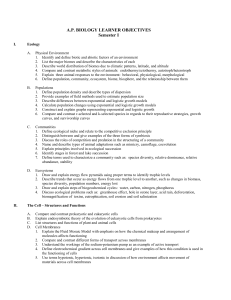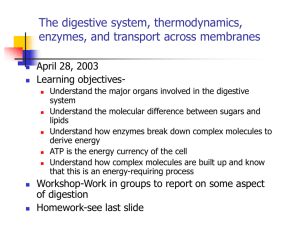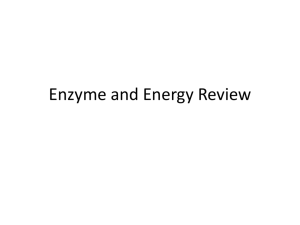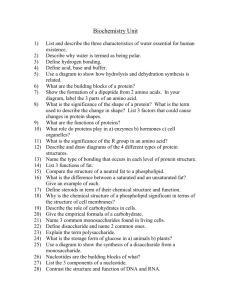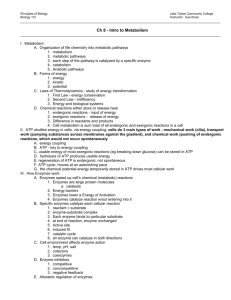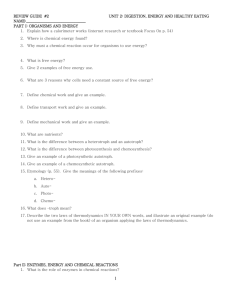CHAPTER 3 OBJECTIVES
advertisement
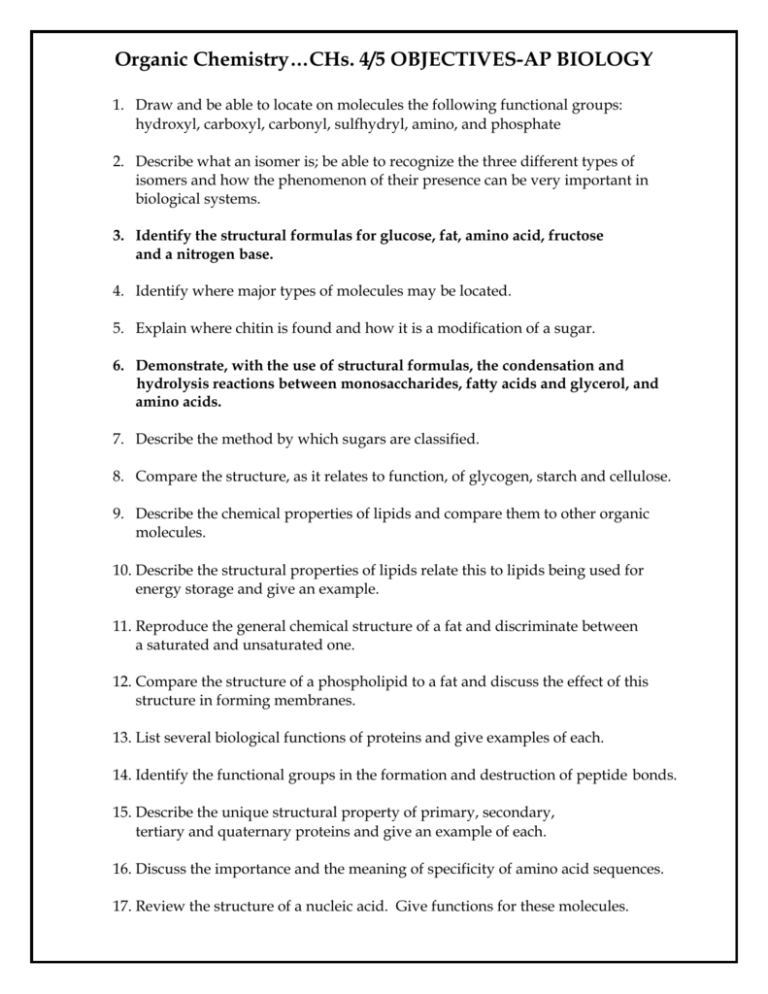
Organic Chemistry…CHs. 4/5 OBJECTIVES-AP BIOLOGY 1. Draw and be able to locate on molecules the following functional groups: hydroxyl, carboxyl, carbonyl, sulfhydryl, amino, and phosphate 2. Describe what an isomer is; be able to recognize the three different types of isomers and how the phenomenon of their presence can be very important in biological systems. 3. Identify the structural formulas for glucose, fat, amino acid, fructose and a nitrogen base. 4. Identify where major types of molecules may be located. 5. Explain where chitin is found and how it is a modification of a sugar. 6. Demonstrate, with the use of structural formulas, the condensation and hydrolysis reactions between monosaccharides, fatty acids and glycerol, and amino acids. 7. Describe the method by which sugars are classified. 8. Compare the structure, as it relates to function, of glycogen, starch and cellulose. 9. Describe the chemical properties of lipids and compare them to other organic molecules. 10. Describe the structural properties of lipids relate this to lipids being used for energy storage and give an example. 11. Reproduce the general chemical structure of a fat and discriminate between a saturated and unsaturated one. 12. Compare the structure of a phospholipid to a fat and discuss the effect of this structure in forming membranes. 13. List several biological functions of proteins and give examples of each. 14. Identify the functional groups in the formation and destruction of peptide bonds. 15. Describe the unique structural property of primary, secondary, tertiary and quaternary proteins and give an example of each. 16. Discuss the importance and the meaning of specificity of amino acid sequences. 17. Review the structure of a nucleic acid. Give functions for these molecules. METABOLISM…Chapter 8 Objectives AP BIOLOGY 1. Explain the role of catabolic and anabolic pathways in the energy exchanges of cellular metabolism. 2. Distinguish between open and closed systems. 3. Explain the first and second laws of thermodynamics; and why highly ordered organisms do not violate the second law. 4. Distinguish between exergonic and endergonic reactions. 5. Explain why metabolic disequilibrium is on e of the defining features of life. 6. Describe the three main kinds of cellular work, and the role ATP plays in a cell. 7. List the three components of ATP and identify the major class of macromolecules to which ATP belongs. 8. Explain how ATP performs cellular work. 9. Describe the function of enzymes in biological systems. 10. Explain the relationship between enzyme structure and enzyme specificity. 11. Explain the induced-fit model of enzyme function and describe the catalytic cycle of an enzyme. 12. Describe several mechanisms by which enzymes lower activation energy. 13. Explain how substrate concentration affects the rate of an enzyme-controlled reaction. 14. Explain how enzyme activity can be regulated or controlled by environmental factors, co-factors, and enzyme inhibitors. 15. Explain how metabolic pathways are regulated. 16. Explain how the location of enzymes in a cell influences metabolism.

